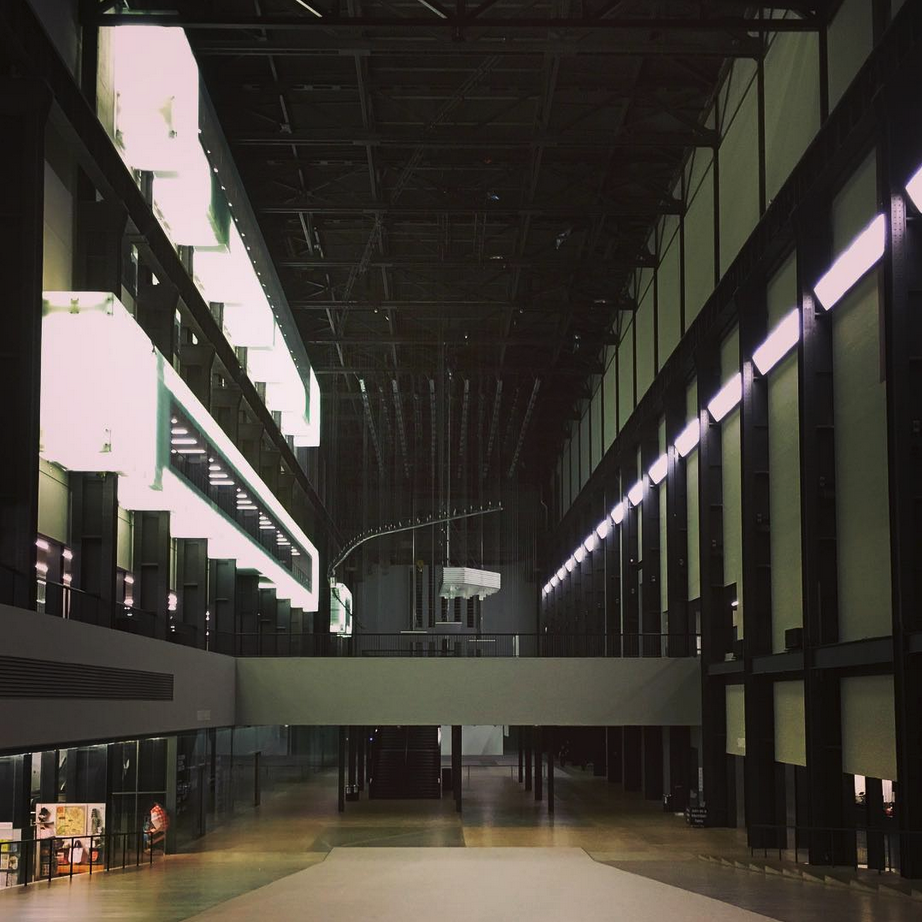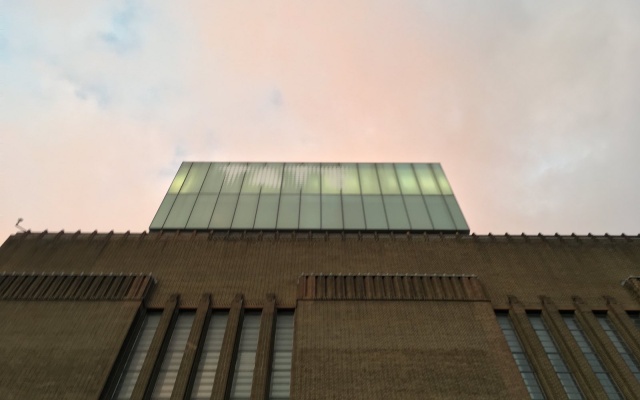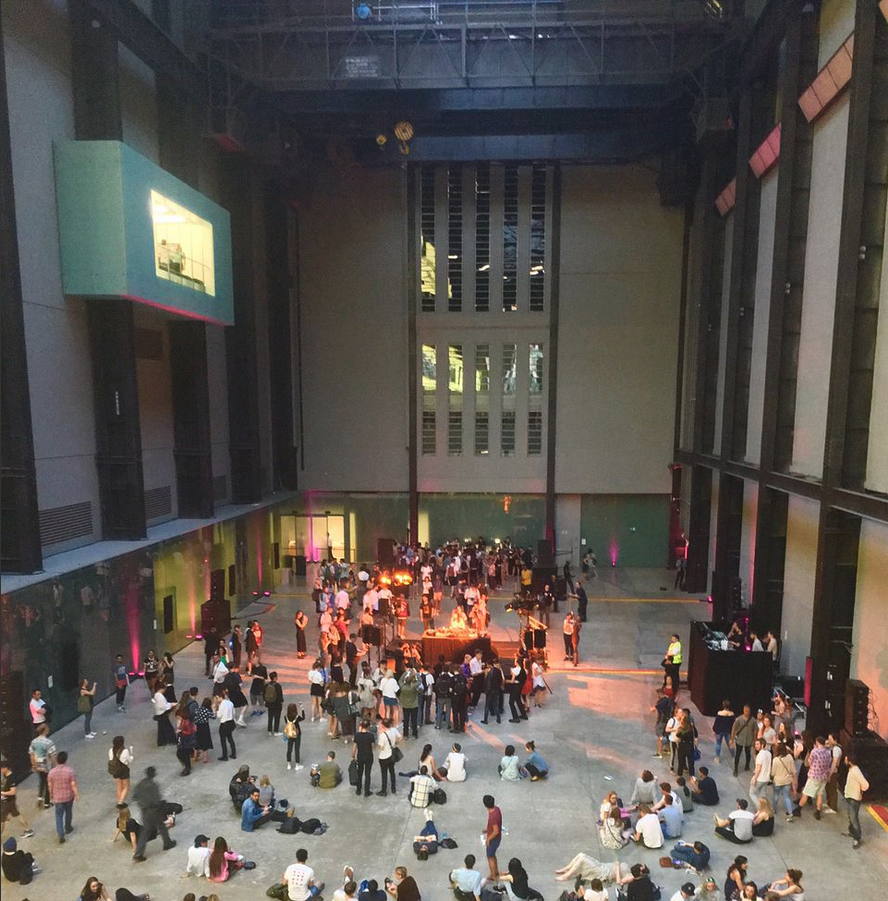- Everyone is conservative about what he knows best.
- Any organisation not explicitly right wing sooner or later becomes left wing.
- The simplest way to explain the behaviour of any bureaucratic organisation is to assume that it is controlled by a cabal of its enemies.
Robert Conquest’s Three Laws
In 2017, when Dr Maria Balshaw was appointed Director of Tate, the national museum for British and contemporary art, I knew there would be trouble. Dr Balshaw had experience as director of a museum in Manchester, but she had no background in fine art. She studied English and Critical Theory at university. Her doctorate is in black American writing. She had never published anything substantial on art history and (four years later) she still has not. Part venue manager, part culture warrior, Dr Balshaw reigns one of Great Britain’s most important museums as an avowed feminist intent.

Tate Modern, fot. Natalia Gomółka
In 2017, I warned of an outright drive towards demographic diversity. The problem is that Tate collects British art, Western modern art (later than 1900) and contemporary art. That last area is effectively as large and flexible as curators want it to be. I foresaw that transformation of Tate would become an anti-patriotic project, with the aim of turning a primarily British collection into a world collection by mounting a surfeit of exhibitions by non-British (especially non-Western) and flooding the collection with non-Western art. The aim is a) to degrade British art tradition, b) to destabilise the British art canon, c) to “problematise” (i.e. undermine) a notion of British national identity, and d) to turn London into a node of a cosmopolitan globalised culture, denatured.
I wrote in 2017:
“Collection and exhibition of art will be increasingly driven by the imperative to promote female/minority artists regardless of aesthetic or formal qualities of their art. There will be a drive to pack the collection with art by women/minorities in an attempt to reach arbitrary statistical targets. The contemporary collection will become a massive ever-inflating multi-million-pound experiment in social engineering grounded on untested principles, driven by ideology and set to utilitarian goals: to demonstrate virtue and make visitors virtuous.”
When I approached the Tate this year on their policy regarding “diversity”, a representative replied:
“Without imposing targets or quotas, Tate believes firmly in representing different viewpoints and backgrounds in all that it is. We do this through various means, from increasing representation through a diverse collection strategy, to advertising roles to reach as diverse a candidate pool as possible.”
This admission shows that diversity is an aim but – for legal and political reasons – Tate does not have a written policy on this matter. This allows Tate to apply unspoken informal quotas rather than written formal quotas. The results are the same, but it means that should any legal case arise, culpability for discrimination is difficult to pin on Tate’s management.
Collecting artists, not art
So where is the evidence of this flood? Well, it is diffuse and has taken place of years. Here is the latest example. A press release of 14 October from agency Bolton Quinn and Tate announced that the Tate had accepted new art pieces, including one piece by Sung Tieu (b. 1987, “Vietnam/USA/UK”) entitled “Filling Gaps (2021)”. The description is “Tampons from VEB Vliestextilien Lößnitztal, polished stainless-steel tube with framed Work Contract, stamp on digital print, framed, 25 x 1200 x 25 mm”. Although the press release does not tell us, we can presume the tampons are unused.
Another piece was a collection of “natural stones and fruit”, entitled The Echo of an Ancient Form of Knowledge (Ru k’ ox k’ob’el jun ojer etemab’el) (2021). This “art work” is by Edgar Calel (b. 1987, Guatemala). The most incomprehensible part of the acquisition is accompanying note that states, “Tate has agreed with the artist, Edgar Calel, to become the custodian of Ru k’ ox k’ob’el jun ojer etemab’el, (The Echo of an Ancient Form of Knowledge), 2021. Through entering into this alternative to a conventional acquisition, the museum welcomes an opportunity to listen to and learn from the knowledge that the work (and, more broadly, Maya Kaqchikel cosmology) holds.” Who knows what that means?
The other art works are by Rene Matić (b. 1997), Mike Silva (b. 1970) and Obiora Udechukwu (b. 1946). The artworks were purchased for Tate by Endeavour from the Frieze Art Fair, London. Endeavour is described as “a global entertainment, sports and content company comprised of industry-leading brands including WME, IMG and UFC”. These acquisitions (which cost £150,000 in total) would have to have been pre-approved by Tate.
The purchase selection panel included Polly Staple, one of the directors of Tate. Polly Staple is another feminist and supporter of conceptual art. One of the events she arranged at her previous job as director of Chisenhale Gallery, London (in 2016) was to close the gallery as a 5-week conceptual art stunt. She and the contracted staff got paid (in part by the Arts Council of England funds) while the venue was closed to the public. Staple became Director of Collections at Tate in January 2020, during Dr Balshaw’s tenure.
Feminism and anti-humanism
With feminists at the top, the drive for women artists’ representation has also distorted curatorial policies. The Turner Prize is the UK’s premier art prize, given annually. Over the last 11 years the Turner Prize, 67% of Turner Prize winners were women. Of the nine grants given to individual artists in lieu of the Turner Prize in 2020, six were to female artists, three were to male artists. Having slain the dragon of patriarchy, the jury of the Turner Prize have decided to turn their attention to pesky individuality. The 2021 Turner Prize nominees are all art collectives. This betrays an audaciously clear hostility to the idea of exceptional individuals. It shows contempt towards art judged by aesthetics – all the collectives’ art is “artivism” or social projects of various types – as well as towards artists as producers of unique and personal statements in visual form.
The drive to anonymise, collectivise and treat people as little more than utile drones in undeniable. How telling that one of the Turner-Prize-nominated collectives (dedicated to the welfare of people) seems to despise individuals. They write, “[…] Black, brown, working class, disabled, queer bodies are desirable, quickly dispensable, but never sustainably cared for.” The talk of people as “bodies” is dehumanising. Such attitudes remind one that sociopaths who join mass movements to improve the lot of humanity prove to be quite amenable to torturing and killing. Polish readers will be aware of the anti-human language that comes out to the mouths of Western art institutions and academies.
Once one is aware of the drive to pack to the collection with art by supposedly marginalised groups and the tendency to treat everyone as members of groups rather than as individuals, it is impossible to unsee this political poison at work. In 2017, Tate wrote to me and stated its aim was “to generate a rich mix which moves towards a fairer gender balance”. In a post-modern era, aesthetic qualities are subjective, so anything can be defined as art, which allows curators to acquire substandard art because they want to boost demographic “representation” in the collection.
Yet who will stand up and object to the Tate’s massive drive to acquire contemporary art, primarily on the basis of the ethnicity, religion, sex and sexual orientation of makers, with the aim is to make the collection more “diverse”? “Diverse” in current political means anti-majority. Hence one gets the initially puzzling caption praising diversity to a photograph of a group consisting entirely of woman or black people. Who will say, “Art should be judged primarily by its visual characteristics”? Not art critics. Too politically conformist, too frightened of professional cancellation, too politically naïve, today’s art critics in the mainstream press are (correctly) dismissed and disregarded. In a Post-Modern age, what value is expert criticism and what standards are to be used? One can hardly blame the public for ignoring critics who cannot even explain what their functions are.
Tate Modern Lates, fot. Natalia Gomółka
Forbidden speech
When I reported that story in an article on the Russia Today website, it was posted as a link on Twitter. The first quote was “If you question the quality of the art, you are a 'boor.' If you question the ethics of the policy, you are a 'bigot.' Get used to it. There is more coming.” It got reasonable interaction. The second was “The absurd material acquired by national museums across the West is partly explicable as a PC drive to defeat so-called marginalisation by buying in bulk art by women and minorities." That got one interaction then it was frozen. There were no more likes or retweets. Twitter’s political algorithm had caught the phrase “so-called marginalisation” and had suppressed interaction and (possibly) visibility of that post. The aim was to disadvantage a statement critical of the identity politics left.
The interference of a supposedly neutral social-media platform is not news. It is breaking the law. The US Federal Government grants social-media corporations immunity from prosecution for libel as platforms, as opposed to publishers, such as a news websites, newspapers or broadcasters. A platform – like a telephone company or a postal service – cannot be held responsible for people legally using its services to do and say things that infringe the law, although it must take reasonable measures to withdraw the material when it is notified of such an incident. In short, it is not practical or ethical for a platform to vet material in its system, but it is reasonable for a publisher to do so. That is why a platform can maintain immunity but only so long as it does not editorialise or promote material as a publisher does.
However, it is well known that Twitter, Facebook, Instagram and YouTube heavily censor and suppress material on the basis of politics. They will remove material if a person uses a pronoun they deem incorrect. They remove material that has a nationalist character, criticises government policy, deviates from the dictates of supra-national organisations such as WHO, the UN and others. As this political bias aligns with the Democrat-led Federal government in the USA, such illegal action can continue unchecked. Social-media firms gain protect as platforms but exercise the influence of publishers so long as they act as tools of globalist political interests.
It is clear that resistance to globalisation and efforts to degrade art will be opposed by social and mass media.
An Eisteddfod for the future
Realising that our museums, universities, schools, government departments, heritage organisations and arts charities (not to mention mass and social media) have – as Conquest’s third law suggests – all been captured by the enemies of culture (the political types, the puritan zealots, the globalist utopians) we must build parallel societies in the West. With that in mind, I recently suggested an old model as a way forward.
An Eisteddfod is an annual arts festival, primarily literary – comprising displays of recitation, poetry, singing and musical performance, art, craft and cultural accomplishment. A Welsh-nationalist revival (or recreation) of bardic gatherings, Eisteddfodau are both local and national in Wales, the Welsh diaspora and Celtic regions. In Wales, there are some that have participants who are local, national or international. The fact that most or all of Eisteddfodau are conducted in Welsh is a naturally limiting factor.
Now that state (and increasingly, local) venues are programmed along quota lines, with demographic characteristics of creators’ priorities over merit, ambitious and talented artists find themselves marginalised as never before. Traditionalists, and even apolitical artists, need to form their own networks. Any events need to eschew “diversity, inclusion and equity” (as conflicting with participant merits) – which will, de facto, render the events ineligible for state funding.
Eisteddfodau (plural) serve as national gatherings in Wales. They are a meeting place for the elite, creators, followers of the arts and ordinary people wanting the enjoy art and share communal experiences. One route could be an Eisteddfod organised by traditionalists and dissidents, one for the whole of the United Kingdom. (Of course, local ones would also be beneficial.) A multi-arts festival held annually, in a different location each time (or on a rotating roster of locations) open only to British nationals or those born in Britain could be a way of encouraging creators locked out of a state-funded arts system which is hostile to them. The content of the arts could be apolitical. In fact, I suggest that there be no political criteria for selection. The only bars should be entrants being British nationals and merit within the field. Entrants should be judged anonymously, as far as possible. Prizes could be given; grants and scholarships could be awarded to promising practitioners aged under 25. The events would sell exhibited material, with the organisers taking a percentage to help fund the event. Distinguished practitioners could be honoured with special displays or performances. Authors could be invited to read their works. Book signings would encourage sales and give authors income. Recitations from memory could be encouraged. Discussion panels and lectures could also take place in tandem. Livestreaming of performances, discussions and interviews could take place. For a voluntary fee, a commemorative book could be published and posted to ticket buyers after the event, including artwork, photographs and delivered texts.
Such a scheme is ambitious, but we know they can work. The key is to build incrementally, each year, consolidating gains and learning from mistakes. One thing we know is that such a project will face unremitting scorn, hostility and even disruption from the state, mass media and activist minions of the outer party. For doing what was normal in our lifetimes – setting up something little more than a county fair, with an emphasis of the arts – the participants will be pilloried as racists, xenophobes and knuckle-dragging little Englanders. But, in a world where simply speaking the truth and holding to one’s beliefs is cast as being adjacent to moral atrocities, there is nothing honest we can do that will not be relentlessly assaulted by globo homo.
I suggest that we in the West set up such robust events. It is a model that can be followed in any nation where there exists a body of people determined to resist globalisation and political extinction. We must build for the future in the sure knowledge that the state and all its apparatus loathe us. We are dissidents in our own lands.
Photos by Natalia Gomółka




